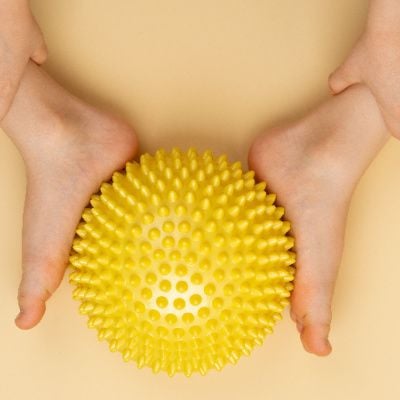 Freiberg's Disease, an uncommon condition affecting the metatarsal bones in the foot, can be a perplexing challenge for those experiencing its symptoms. In this comprehensive guide, we will navigate through the intricacies of Freiberg's Disease, shedding light on its causes, symptoms, diagnostic methods, and management strategies. Understanding this condition is crucial for individuals seeking clarity on their foot health and the potential impact on their daily lives.
Freiberg's Disease, an uncommon condition affecting the metatarsal bones in the foot, can be a perplexing challenge for those experiencing its symptoms. In this comprehensive guide, we will navigate through the intricacies of Freiberg's Disease, shedding light on its causes, symptoms, diagnostic methods, and management strategies. Understanding this condition is crucial for individuals seeking clarity on their foot health and the potential impact on their daily lives.
Definition and Background: Freiberg's Disease, also known as Freiberg infraction, is a condition characterized by the deterioration of the metatarsal head, commonly affecting the second metatarsal. We will delve into the historical context of the disease and its classification within the spectrum of foot disorders.
The Prevalence Puzzle: While considered rare, Freiberg's Disease has been identified in varying demographics, with a higher prevalence among females. We will explore the factors contributing to its occurrence and the potential role of genetics in predisposing individuals to this condition.
Underlying Causes
Trauma and Mechanical Stress: Freiberg's Disease often arises from repetitive trauma or excessive mechanical stress on the metatarsal head. This section will elucidate how activities like ballet dancing or wearing inappropriate footwear can contribute to the development of this condition.
Vascular Factors: Impaired blood supply to the metatarsal head is another factor linked to Freiberg's Disease. We will explore how compromised blood circulation may play a role in the degeneration of the affected bone, contributing to the condition's progression.
Symptoms and Clinical Presentation
Gradual Onset of Pain: Freiberg's Disease typically manifests with a slow and insidious onset of pain in the forefoot, especially during weight-bearing activities. We will explore how individuals may initially dismiss these symptoms, contributing to delayed diagnosis.
Swelling and Stiffness: Swelling and stiffness around the affected metatarsal joint are common indicators of Freiberg's Disease. This section will discuss how these physical manifestations can impact daily activities and decrease joint mobility.
Changes in Gait and Foot Function: As the disease progresses, gait and foot function alterations may become apparent. We will examine how individuals may adapt their walking patterns to alleviate pain, potentially leading to additional stress on other structures within the foot.
Diagnostic Approaches
Clinical Examination: A thorough clinical examination by a healthcare professional is crucial for diagnosing Freiberg's Disease. We will outline the specific tests and assessments used to evaluate symptoms and joint range of motion and pinpoint the location of pain.
Imaging Modalities: Various imaging techniques, including X-rays and magnetic resonance imaging (MRI), play a pivotal role in confirming the diagnosis of Freiberg's Disease. This section will explore how these modalities provide detailed insights into the extent of bone involvement and aid in treatment planning.
Treatment Strategies
Conservative Management: Conservative treatment measures form the cornerstone of managing Freiberg's Disease in its early stages. We will discuss using orthotic devices, footwear modifications, and activity modification to alleviate symptoms and reduce stress on the affected metatarsal.
Medications for Pain and Inflammation: Pain management is crucial to treatment. This section will explore the use of nonsteroidal anti-inflammatory drugs (NSAIDs) and analgesics to relieve pain and address associated inflammation.
Physical Therapy: Physical therapy can maintain joint mobility and prevent further degeneration. We will discuss specific exercises and stretches to enhance flexibility and strengthen supportive structures around the affected metatarsal.
Surgical Intervention
Joint Decompression and Osteotomy: In cases where conservative measures prove inadequate, surgical interventions may be considered. This section will delve into joint decompression and osteotomy procedures to relieve pressure on the affected metatarsal head and restore joint function.
Arthroplasty and Joint Replacement: Advanced stages of Freiberg's Disease may necessitate more extensive interventions, including joint replacement or arthroplasty. We will explore how these procedures aim to address severe joint degeneration and restore optimal foot function.
Post-Treatment Considerations
Rehabilitation and Follow-Up: Post-treatment rehabilitation is essential for optimizing outcomes. We will discuss the role of physical therapy in facilitating recovery, preventing recurrence, and promoting long-term joint health.
Conclusion
Freiberg's Disease, though rare, can significantly impact an individual's quality of life. By unraveling the complexities of this condition, we aim to empower individuals with knowledge and understanding. Seeking prompt medical attention, adhering to personalized treatment plans, and incorporating preventive measures can pave the way for effective management and improved foot health.
Disclaimer:
The information on this website is provided for educational and information purposes only and is not medical advice. Always consult with a licensed medical provider and follow their recommendations regardless of what you read on this website. If you think you are having a medical emergency, dial 911 or go to the nearest emergency room. Links to other third-party websites are provided for your convenience only. If you decide to access any of the third-party websites, you do so entirely at your own risk and subject to the terms of use for those websites. Neither Northwest Podiatrists, nor any contributor to this website, makes any representation, express or implied, regarding the information provided on this website or any information you may access on a third-party website using a link. Use of this website does not establish a doctor-patient relationship. If you would like to request an appointment with a health care provider, please call our office at (360) 597-4223.
